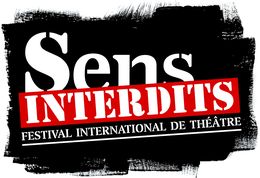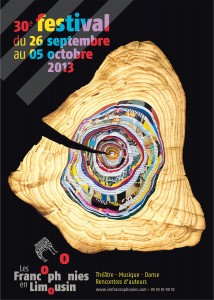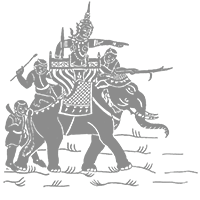Those who have joined us
FESTIVAL SENS INTERDITS
Célestins Theater is a unique cultural institution with a long and particular history – the first construction dates back to 1792, the present building is from 1881. Today, Célestins Theater is the fourth drama institution in France, considering the audience with 100 000 spectators on average per season. The Theater presents on average 25 shows per year with more than 280 performances. 50% of its programme is produced by the theatre itself and its productions are toured on the major national and international stages.
However Célestins Theater focuses on living writers, its downtown nature dedicates its programme to wide audiences. Each programme includes numbers of classic dramatists’ plays, the plays performed in foreign language by worldwide known companies and young companies, a circus show and often, a puppetry show.

In 2009 Célestins Theater has launched the International Theater Festival Sens Interdits. One of the goals of this event is to support the young theater companies from developing countries by providing administration, financial, logistic support and by organizing their touring in France. In 2011 the French tour and production of the first part of “The Terrible but Unfinished Story of Norodom Sihanouk, King of Cambodia” was managed by Célestins Theater.
FESTIVAL DES FRANCOPHONIES EN LIMOUSIN
C’est sous la dénomination « Festival international de la francophonie » que Pierre Debauche, alors directeur du Centre Dramatique National du Limousin, a créé en 1984 le Festival, et en donne la direction à Monique Blin, son ancienne collaboratrice du Théâtre des Amandiers à Nanterre.
 En compagnie de Jean-Marie Serreau, ils avaient maintes fois rêvé d’un espace qui pourrait réunir différents artistes exerçant leur pratique théâtrale dans les pays francophones ; un espace qui verrait le jour dans une région de France et non pas à Paris, dans le droit fil de la décentralisation. Plus qu’un simple élément de diffusion théâtrale, Pierre Debauche affirme dès la première année le rôle d’échange et d’apprentissage que devra remplir ce festival :
En compagnie de Jean-Marie Serreau, ils avaient maintes fois rêvé d’un espace qui pourrait réunir différents artistes exerçant leur pratique théâtrale dans les pays francophones ; un espace qui verrait le jour dans une région de France et non pas à Paris, dans le droit fil de la décentralisation. Plus qu’un simple élément de diffusion théâtrale, Pierre Debauche affirme dès la première année le rôle d’échange et d’apprentissage que devra remplir ce festival :
« Les acteurs ne se contenteront plus de jouer, mais il s’établira entre le public et les comédiens et entre les troupes elles-mêmes, des contacts qui permettront que l’on se connaisse vraiment et que se crée une sorte de pédagogie Sud-Nord.»
Il énonce les pensées de base qui resteront comme le fil rouge de cet événement tout au long des années et que Monique Blin, de 1984 à mars 2000, continuera à développer :
- espace de rencontres d’artistes et de diffusion des œuvres théâtrales.
- priorité aux auteurs contemporains de langue française.
- ouverture de ce Festival sur le département et la région dans lesquels il est implanté.
- création de liens avec différents partenaires autour du concept de « la francophonie ».
- En 1988, Monique Blin dote le Festival d’une Maison des Auteurs, lieu de résidence d’écriture pour des auteurs dramatiques francophones.
Ainsi, au-delà des milliers d’artistes et de centaines de spectacles francophones accueillis, le Festival a permis à des auteurs ou des metteurs en scène tels que Robert Lepage (Canada-Québec), Sony Labou Tansi (République du Congo), Werewere Liking (Côte d’Ivoire), Koulsy Lamko (Tchad), Wajdi Mouawad (Liban/Canada-Québec) et bien d’autres, de diffuser leurs œuvres pour la première fois en France.
D’avril 2000 à décembre 2006, Patrick Le Mauff dirige le Festival, dans le respect des missions qui sont imparties à cet événement et chemine sur de nouvelles pistes :
- la création d’un atelier de réflexion et de pratique sur la mise en scène (1 session par an),
- la création d’une nouvelle bourse d’écriture offerte par le Festival,
- et le développement de coproductions théâtrales avec d’autres festivals internationaux.
Le Festival entend également susciter des questionnements réguliers sur la notion de “Francophonie”.
Marie-Agnès Sevestre a succédé à Patrick Le Mauff en janvier 2006.
Centre Bophana
It was in the early 90s that the film-maker, Rithy Panh, while producing his first documentaries in Cambodia, realized how critical was the condition of the audiovisual heritage of the country. After decades of wars, coups d’état and genocidal madness, the few archives that had been spared seemed to be waiting for time, tropical heat and dust to complete the work of effacing them. One more decade or two and the audiovisual memory of Cambodia would have been reduced to zero, an objective of the Khmer Rouge period that all Cambodians are now trying to surmount.
The concerns of Rithy Panh echoed those of the film-maker Ieu Pannakar, who was then responsible for the cinematic division within the Ministry of Culture and Fine Arts of Cambodia. The two men dreamt about creating a locale for memory and creation where the audiovisual heritage would recover a sense and a renewed dynamism.
The project of a Center for Audiovisual Resources emerged in today’s more favorable atmosphere. It is now recognized that historical archives and culture play a key role in the expression of a nation’s identity and in the constitution of its heritage.
The Cambodian authorities quickly supported the principle and facilitated finding a locale for the Center. Then collaborations undertaken from the French side (bilateral cooperation, technical and financial support, access to the collections of the major archival centers) created an effective level of support. Within several months the project took shape and promised to endow Cambodia with an institution which would gather and lend speech to those who had remained silent for too long.
By chosing the name of Bophana, the Center hopes to bear witness to the message of dignity and courage exemplified by this young women during her S21 Center detention. The project of collecting the Cambodian audiovisual heritage is to create an access to memory, to remember, to transmit a history and a culture to the future generations and this to initiate a better future.
MOre infos: Website of the Center for Audiovisual Resources Bophana.
Other Supports:
The Région Rhône-Alpes, the city of Paris, the Ministère de la Culture et de la Communication, the French Institute, the Organisation Internationale de la Francophonie and the Onda.
Lauréat du Trophée des Associations de la Fondation EDF (2011).
2012 prince Claus Fund Award.
Thanks to Agnès B, Air France, the Ambassade Royale du Cambodge en France, Théâtre national de Chaillot, le Théâtre de l’Épée de bois, le Théâtre de la Tempête, l’Atelier de Paris – Carolyn Carlson, le Théâtre de l’Aquarium, lycée des métiers du bois Léonard de Vinci (Paris 15), Asian Cultural Council, British Academy, University of Leeds, World University Network, Claire-Marie Guillemot and Madeleine Favre.
